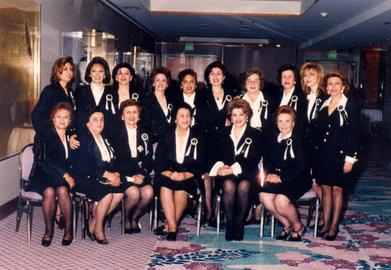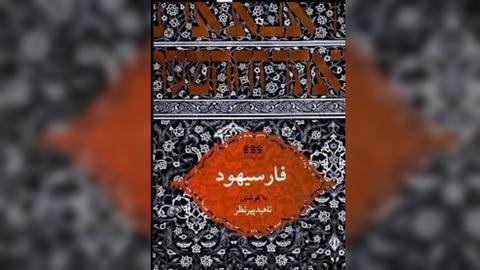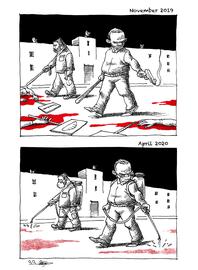Global and Iranian history are both closely intertwined with the lives and destinies of prominent figures. Every one of them has laid a brick on history’s wall, sometimes paying the price with their lives, men and women alike. Women have been especially influential in the last 200 years, writing much of contemporary Iranian history.
In Iran, women have increased public awareness about gender discrimination, raised the profile of and improved women’s rights, fought for literacy among women, and promoted the social status of women by counteracting religious pressures, participating in scientific projects, being involved in politics, influencing music, cinema... And so the list goes on.
This series aims to celebrate these renowned and respected Iranian women. They are women who represent the millions of women that influence their families and societies on a daily basis. Not all of the people profiled in the series are endorsed by IranWire, but their influence and impact cannot be overlooked. These articles are biographical stories that consider the lives of influential women in Iran.
IranWire readers are invited to send in suggestions for how we might expand the series. Contact IranWire via email ([email protected]), on Facebook, or by tweeting us.
Nahid Pirnazar was born on November 22, 1944 in the city of Kermanshah to Jewish parents, father Eliyahu and mother Monir. They later moved to Tehran, where she was enrolled at Ferdowsi School.
Nahid Pirnazar obtained a diploma from Reza Shah Kabir High School near today’s Daneshjou Park; at the time it was in the same vicinity as Hafez Avenue and Chahar-rah College, near the well-known Alborz High School.
Because she was one of the school’s best students and had good proficiency in English, the Ministry of Education awarded her the American Field Service Scholarship to study in the United States for a year. She completed her last year of high school there, and after obtaining her diploma with a special mention for academic excellence, she returned to Iran.
At the American Field Service, one of Pirnazar’s tasks was to select gifted Iranian students to study in the US for a year as she was doing, and to help American students planning to visit Iran to gain knowledge of Iranian culture.
Pirnazar loved learning and after returning to Iran, she studied literature at Tehran University. She completed her Bachelor’s degree in 1965 and then began working at the university, while at the same time continuing her studies.
Pirnazar's work and achievements were already unimaginable for many Iranian women of that period. She decided to extend her studies, attending the Department of Educational Sciences of Tehran University to obtain her Master’s degree in teaching second languages, which she did in 1976.
As a reward of her great talent and the high grades she received for her Master’s degree, Mohammad Reza Shah presented her with the Farhang Culture award from the Ministry of Science and Higher Education.
After her graduation, Nahid Pirnazar continued working at the university, teaching English at both the Foreign Languages Center and the Department of Literature and Fine Arts.
A few years later and before the Islamic Revolution, she moved to the United States. Soon after moving there, she joined the Iranian Jewish Women Organization in Los Angeles and served as its director for a period.
She then began working as a member of the executive board of Habib Levy Cultural Foundation, supervising the editorial work and publications of the foundation. She also joined the executive board of the Society of Scholars, and along with friends and colleagues, co-founded the Farhang Foundation in the United States with the goal of introducing and promoting Iranian culture to second-generation Iranians living in the United States, as well as introducing Iran’s rich culture to non-Iranians. She worked as the executive manager of the foundation for two years, and it continues to be active today.
As a scholar, Nahid Pirnazar always saw herself as part of the educational process of the world around her and was committed to learning, attending the University of California, Los Angeles (UCLA) in 1998. After completing another Master’s degree, this time in Iranian Studies, she began a PhD in Jewish History and Persian Literature.
She established the House of Persian Jewish Documents and Handwritings in Los Angeles in 2000 and collected and classified numerous neglected works related to Iranian Jews, some of them written in Hebrew, for future scholars of Persian language.
Pirnazar then went on to teach Iranian culture in various universities in California. In 2006 she was invited to teach Iranian Jewish history and culture at Yeshiva University in New York.
Nahid Pirnazar has always had a deep interest in women’s studies and gender issues. She has shown a particular interest in the history and practice of get, the traditional divorce document within Jewish communities, which she hoped would one day be reviewed and reformed. She referred to Jewish orthodox sources, attorneys, experts, and women’s rights activists in the United States, and organized a range of events and academic discussions on the matter. As part of this work, she was commissioned by the Iranian Jewish Women’s Organization to conduct research on the topic, and to write a special issue of the organization’s publication entitled A Solution for Get [Religious Divorce] and Agunah ["chained woman”], a body of work that attracted considerable attention among women’s rights activists and academics.
Today, Nahid Pirnazar lives in California, where she has published several books, including Farsihood, about Persian language writing in the Hebrew alphabet, examples of which can be found on old stonework, ceramic and metallic works, relics of another time.
Read other articles in this series:
Dr. Mina Izadyar, a Zoroastrian Doctor at the Service of All Iranians
Mahshid Amirshahi, Writer, Journalist and Satirist
Parvin Motamed Amini, A Life Devoted to Education



























comments